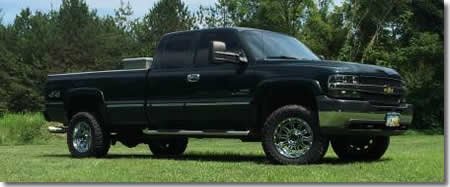
I drove my 2002 Chevy Silverado 2500HD Duramax Diesel about month a and a half go with no problems. I went to take the truck out today, it started right up and I let in warm up for about five minutes. When I went to back out of the garage there was no power steering and no power brakes. Serpentine belt is on and no signs of any leaks. The power steering fluid is full and brake fluid full. Any ideas what might be wrong. Truck has only 76,000 miles on it.
Hydro-boost Testing
Fluid level good: Check tension and condition of drive belt. If the drive belt is loose or damaged, tighten or replace as required and repeat the basic test (Steps 1-2). If pump speed is slow, adjust and repeat basic test. If pump speed is OK, perform pump flow and relief pressure test.
Perform Basic Test:
- Engine (pump) off, depress and release the brake pedal four times to deplete all hydraulic pressure from hydo-boost.
- Depress brake pedal and hold with light pressure then start the engine. If the power section is operating properly the pedal will fall slightly and then hold. Less pressure will be needed to hold the pedal in this position. If the power section is NOT operating, go to step 3, otherwise go to step 4.
- If power section is not operating properly, check pump reservoir level. If level is low, add fluid and repeat basic test plus Hydraulic Leak Test (Steps 4 to 5). If fluid level is good, go to step 6.
- Steering Hydraulic Leak Test: Thoroughly clean the hydo-boost unit and all hose connections. Start the engine and run at idle speed. If the hose fittings do not leak go to step 5.
- Check the hydro-boost for leaks. Apply the brake pedal with approximately 100 lbs. force and hold while checking hydro-boost hose fittings for leaks. Do not hold brake pedal at 100 lbs. effort for more than five seconds at a time. If the hydo-boost leaks, it is defective and should be replaced or repaired. If no leaks are found in the hydro-boost or hoses, do not repair or replace them.
- Fluid level good: Check tension and condition of drive belt. If the drive belt is loose or damaged, tighten or replace as required and repeat the basic test (Steps 1-2). If pump speed is slow, adjust and repeat basic test. If pump speed is OK, perform pump flow and relief pressure test.
- If pump output is below minimum specification, replace and repeat basic test. If all test and checks are OK, the booster is defective and should be replaced or repaired.
- If power section is operating, perform the following steps in order.
- Hydro-boost accumulator pressure retention test: Run pump to medium speed, apply brake pedal force to 100 lbs. for not more than five seconds and then stop engine.
- Wait 90 seconds and apply the brakes. Two or more applications should be power assisted. If applications are not power assisted the hydro-boost is defective and should be replaced or repaired. If applications are power assisted, go to next step.
- Thoroughly clean the hydo-boost unit and all hose connections. Start the engine and run at idle speed. If the hose fittings do not leak, go to step 5.
- Check the hydro-boost for leaks. Apply the brake pedal with approximately 100lbs force and hold while checking hydro-boost hose fittings for leaks. Do not hold brake pedal at 100 lbs. effort for more than five seconds at a time. If the hydo-boost leaks, it is defective and should be replaced or repaired. If no leaks are found in the hydro-boost or hoses, do not repair or replace them. Perform the brake hydraulic leak test.
- Brake Hydraulic Leak Test – Depress and release brake pedal several times, then hold pedal depressed with medium pressure of 25 to 35lbs. If pedal does not fall away, hydraulic system is not leaking. If pedal falls away, go to next step.
Pedal falls away under constant pressure – hydraulic brake system is leaking. Check for external leaks at wheel cylinders, calipers, hoses and lines. If no leaks are found, additional diagnostic steps are necessary.
Service
The hydro-boost in not serviceable in the field. If the unit is not functioning properly, it must be replaced. The replacement process is straight forward, but bleeding can sometimes be tricky. I am offering a choice of techniques in this area. Hydro-boost brake systems are supposed to be self-bleeding, but this does not always prove to be true.
Source: www.brakeandfrontend.com/operation-diagnosis-and-repair-of-hydro-boost-power-assist-systems/